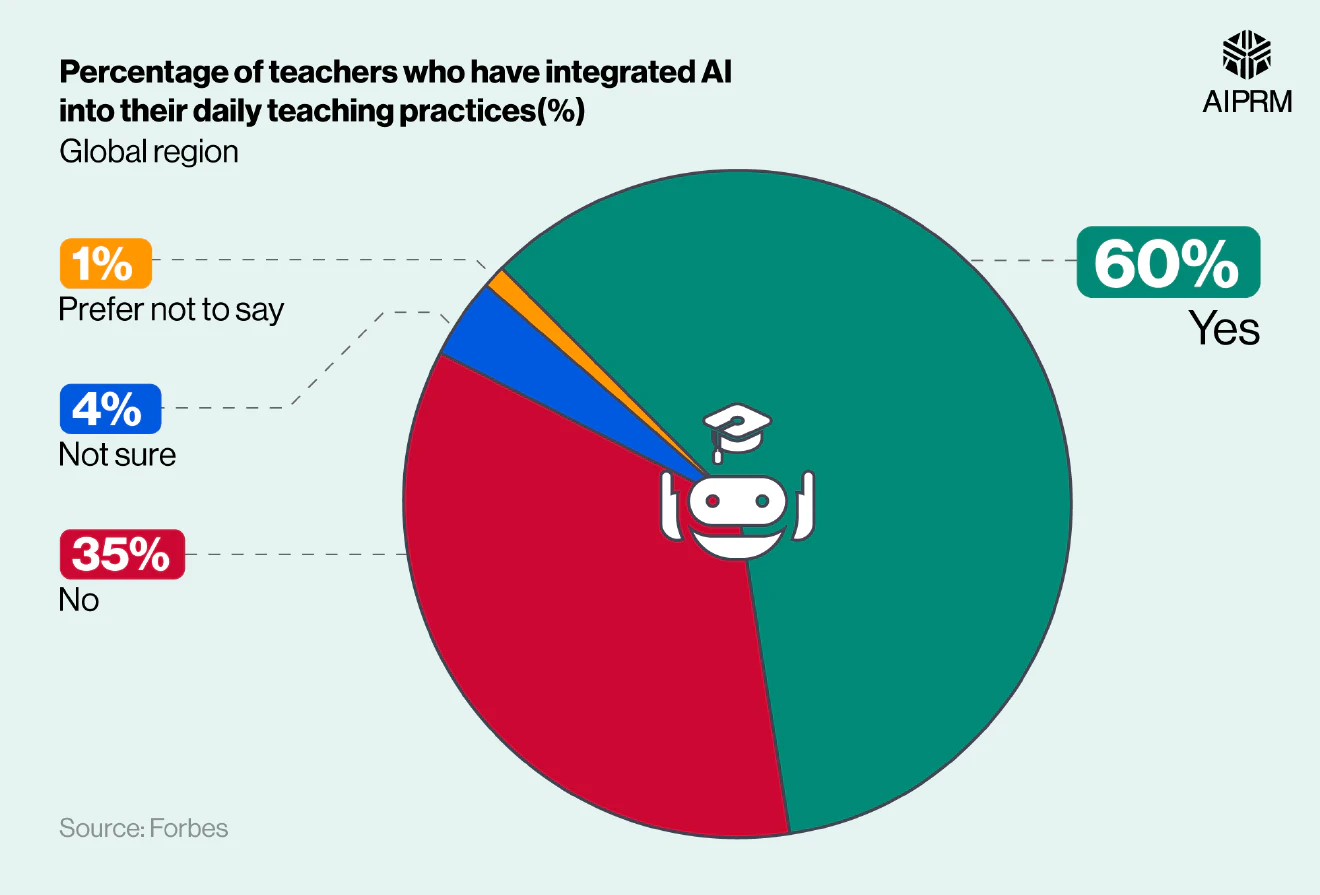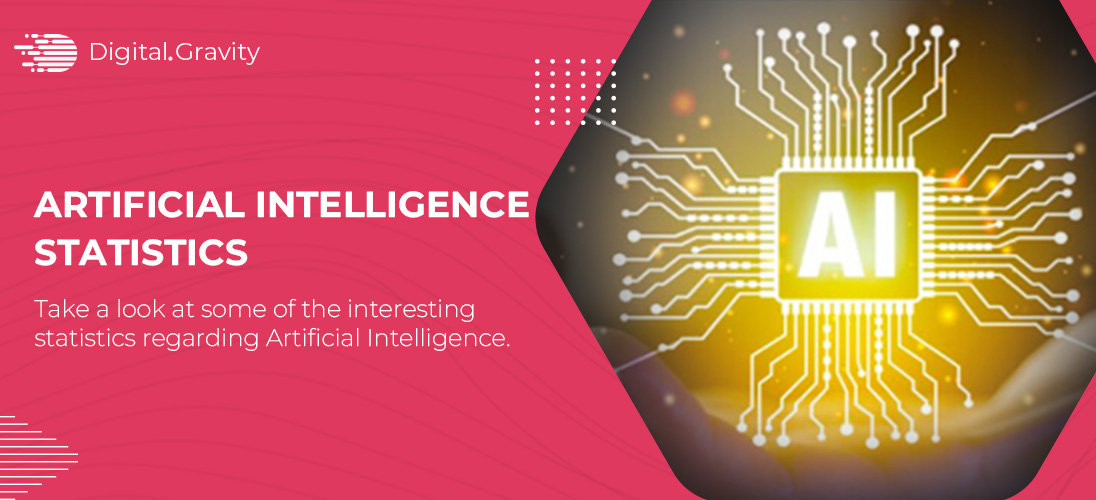Artificial intelligence (AI) has become a must-have for everyone with the amount of innovation happening in the tech industry. No matter if it is about reshaping various industries or altering the fabric of your daily lives – according to the AI usage statistics, no one is left behind. The AI usage trends stand as witness to all the innovations made by the uses of artificial intelligence.
So, in this comprehensive piece of content, we will talk about all the AI statistics, trends and its demographics. Aiming to provide you with insights from a business owner perspective, the AI job market, educational, consumer usage, and many more.
These statistics are compiled from a wide variety of sources which can be found at the bottom of the blog post.
AI Usage Statistics
Artificial Intelligence is not just something for the future; it’s already a part of our daily lives. You can find it in many of the devices and systems we use every day. Take a look at the artificial intelligence usage statistics and AI facts about how common AI is and how it is expected to affect the economy. This will help you to understand how quickly the use of AI is increasing and how many people are starting to accept it.
- Out of 67,200 AI companies in the world, 25% of them are based in the United States.
- The top 10,000 AI startups listed on Crunchbase received $30 billion in funding last year.
- A Google search for “AI” shows 15.16 billion results. For comparison, “TikTok” has only 5.7 billion results.
- Google Scholar has 6.65 million articles with the phrase “artificial intelligence” in the title.
- NVIDIA, a company that makes AI servers, plans to produce 1.5 million units each year by 2027.
- The electricity needed for NVIDIA’s AI servers is about 85.4 terawatt-hours per year, which is similar to what the Netherlands uses.
- Out of 135,000 people in the U.S. who mention “AI” in their social media bios, 66% are male.
- The number of women publishing their first AI research increased by 93% in the last ten years.
- Only 23% of the leading AI innovators are women out of a total of 133,082 people.
- 22% of the world’s female AI experts are in the U.S., followed by the UK and Germany.
- Taiwan has the highest percentage of women in AI at 36%, and Australia is next with 26%.
- 77% of devices in use today have some form of AI technology.
- 9 out of 10 organizations see AI as a way to gain a competitive edge.
- By 2030, AI is expected to add $15.7 trillion to the global economy.
- By the end of 2025, AI may take away 85 million jobs, but it is also expected to create 97 million new jobs, leading to a net gain of 12 million jobs.
- 63% of organizations plan to start using AI within the next three years.
- The AI market is expected to grow by at least 120% every year.
- In 2025, the global AI market is projected to grow by 33% compared to the previous year.
- 88% of people who do not use AI do not know how generative AI will affect their lives.
- Only one out of three consumers think they use AI tools, while the actual usage is 77%.
The Current Size and Growth Predictions of the AI Industry
The AI industry is growing fast in 2025. Right now, it is worth more than $200 billion, and it is expected to become more than 55% bigger by the end of the year. Many companies are using deep learning, which is an important part of artificial intelligence. Here are some key statistics:
Some Estimates for The Global AI Market Value
- About $244 billion in 2025.
- Expected to reach $826 billion by 2030.
- From 2022 to 2030, the AI market is expected to grow at an annual rate of 23.8%.
- In 2025, the North American AI market is valued at about $73.98 billion.
- With help from AI technologies, Web3, and the Metaverse; the global cloud computing market is expected to reach $826 billion by 2030.
Regions Most Willing to Use AI Technology
The following is the amount of employees in a region that are willing to use AI technology to help them out with their work:
- Latin America (48%)
- Asia Pacific and Japan (46%)
- Europe, The Middle East, and Africa (38%)
- North America (36%)
The Possible Impact of Generative AI
- High in sectors like e-learning, electronics, high-tech, ecommerce, and software (more than 50% of employees may be affected).
- Medium in banking and finance, retail, distribution, consumer products, healthcare, and life sciences (20-30% of employees may be affected).
- Low in industries like manufacturing, energy, utilities, and legal services (less than 20% of employees may be affected).
AI Stats and Demographics
Understanding who knows about and uses AI (Artificial Intelligence) helps us see how popular it is in different parts of society. This section looks at who is familiar with and uses AI based on age, gender, and income.
Who Knows About AI?
Some groups are more aware of AI than others:
- 40% of Asians
- 38% of men
- 38% of people aged 30 to 49
- 53% of people with a postgraduate degree
- 52% of people in high-income jobs
Virtual AI Assistant Usage Statistics for Different Age Groups
Among different ages, the most common AI technology used weekly is virtual assistants like Siri and Alexa:
- 30.8% of people aged 61 and older use this technology weekly.
- 14% of people aged 41 to 60 use virtual assistants weekly.
- 25.3% of people aged 26 to 40 use them weekly.
- 29.9% of people aged 18 to 25 use virtual assistants weekly.
AI Stats by Gender
- Men know a little more about AI than women (38% vs. 23%).
- More men than women use virtual assistants.
- Women use music playlists with algorithms a bit more often than men.
- Women use AI slightly more than men for technologies like fitness trackers on a monthly basis.
- Women are less likely to have never driven an autonomous vehicle compared to men (85.6% vs. 84.7%).
AI Jobs and Market
The use of AI, or artificial intelligence trends, is changing how businesses work and also affecting jobs. In this section, we will look at how businesses use AI and what this means for jobs related to AI.
Here are some of the main ways that most businesses use AI:
- Customer Service: 56% of businesses use it.
- Cybersecurity and Fraud Prevention: 51% of companies use AI for it.
- Digital Personal Assistants: 47% of businesses have them.
- Customer Relationship Management: 46% of companies use AI for keeping track of customers.
- Inventory Management: 40% of businesses use AI to manage their supplies.
Here’s how AI can help workers and business owners:
- For Workers:
- 52% of experts think that automation will take away some jobs, but it will also create new jobs.
- AI could help workers increase their productivity by 1.5% over the next ten years.
- Around the world, growth driven by AI could be almost 25% better than growth from automation without AI.
- The fields of software development, marketing, and customer service are the ones where automation and AI are being used and invested in the most.
- Using AI is expected to make workers 40% more productive.
- For Business Owners:
- 60% of business owners believe AI will help their workers do better.
- 83% of businesses say that using AI in their plans is very important.
- The manufacturing industry is likely to get the most benefits from AI, with an expected increase of $3.8 trillion by 2035.
- 63% of companies in the IT and telecom industries use AI.
- 44% of car companies are using AI.
AI and Education
The connection between AI (artificial intelligence) and education is very important for future growth and progress in society. This part talks about how AI usage is being done in schools. It looks at what teachers think, how ready schools are, and what it means for students. Some must-know AI usage statistics.
- Only 10% of teachers believe that teaching AI is one of the most important things for schools to focus on.
- About 33% of teachers feel that teaching AI in schools is very important.
- Just 13% of teachers think that teaching AI technologies to students is mostly unimportant or not important at all.
- A large number, 60% of teachers, have integrated AI into their daily teaching practices.
- More than half (54%) of parents think that AI might be helpful for their child’s education.
- However, 80% of parents are worried about the negative effects of AI in education.
- Their biggest doubts are about privacy (keeping personal information safe) and whether AI-generated information is correct and trustworthy.
- Only 35% of parents have talked to their kids about how they use AI.

Source: AIRPM
In the U.S., people with a higher education know more about the usage of AI in their everyday life:
| Education Level | Percentage Aware of AI in Everyday Life |
| Postgraduate | 53% |
| College graduates | 46% |
| College education | 28% |
| High School Graduates | 14% |
Conclusion
When it comes to the use of AI, we can conclude that artificial intelligence (AI) is transforming many aspects of our lives. These include business operations, employment, learning, and even the way people purchase things.
It’s crucial for business organizations, consumers, and policymakers to collaborate as they embrace this new era chaperoned by AI. AI is a relatively recent phenomenon in the evolution of organizations, working arrangements, and society, and hence, the actual benefits will be possible only if work and its associated coordination and cooperation are organized in constructive collaboration.
Digital Gravity KSA is an innovative AI development company in Saudi Arabia that encourages the incorporation of AI in businesses. We have a team of professionals who are very familiar with all the ins and outs of artificial intelligence to assist businesses in succeeding. So, just in case you need AI development services, do not forget to consult with us.
References
Sources: Loup Ventures, Statista, Statista, Grand View Research, Statista, McKinsey, PWC, Stanford’s AI Index, WSJ, Statista, Statista, Statista, Accenture, AIRPM,








